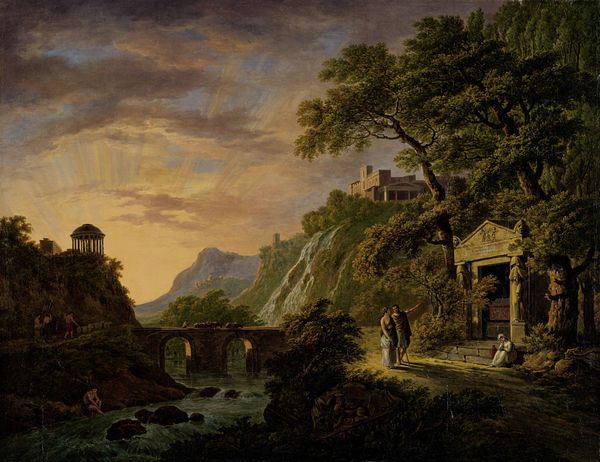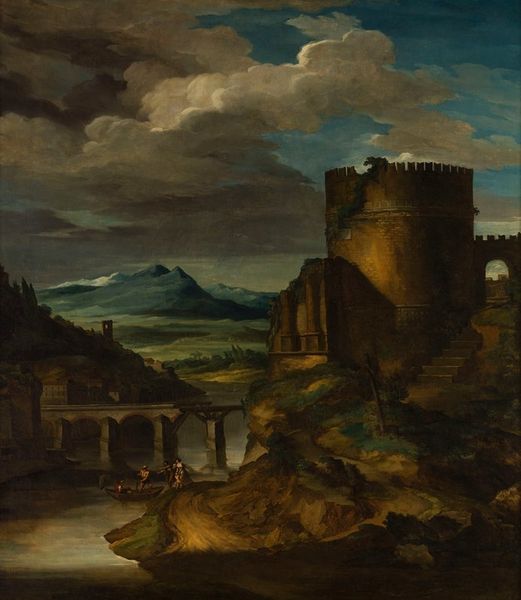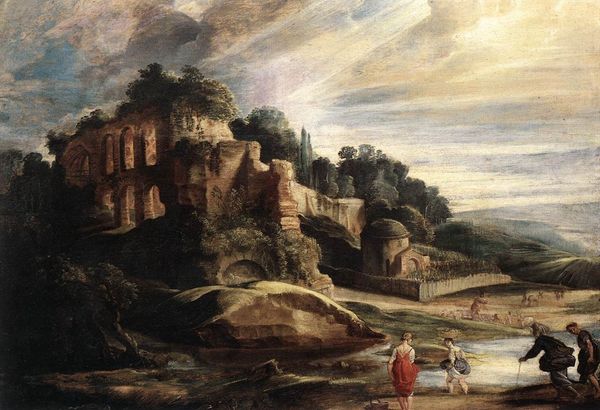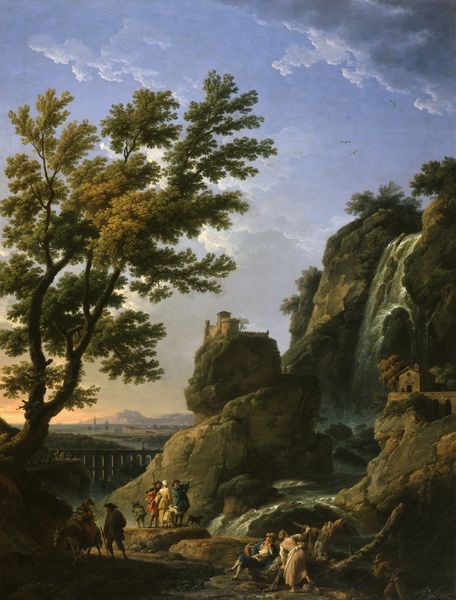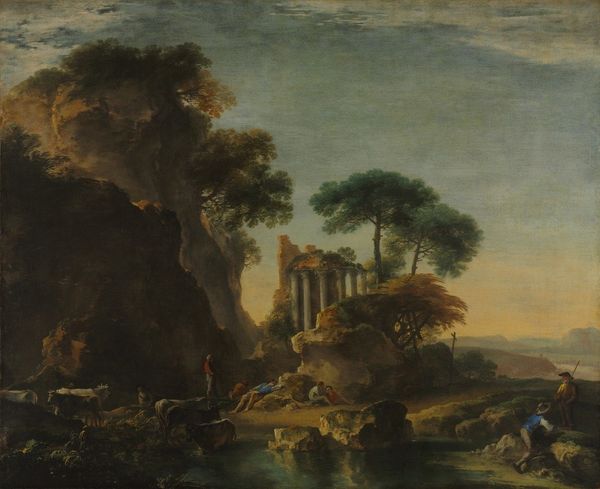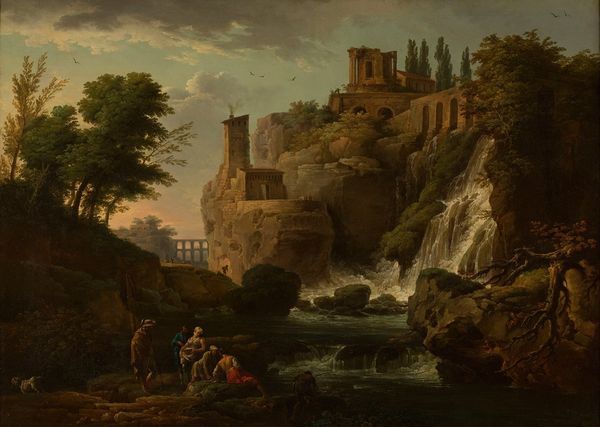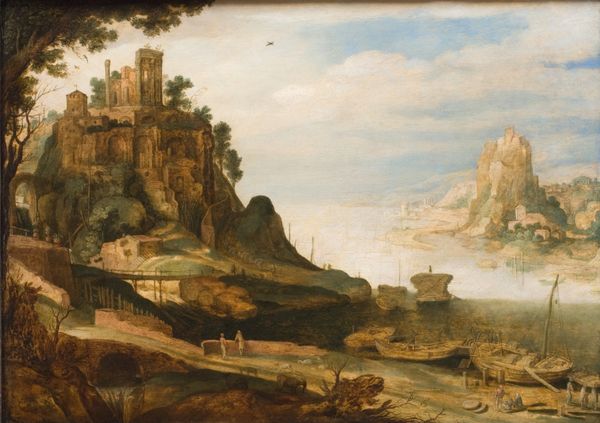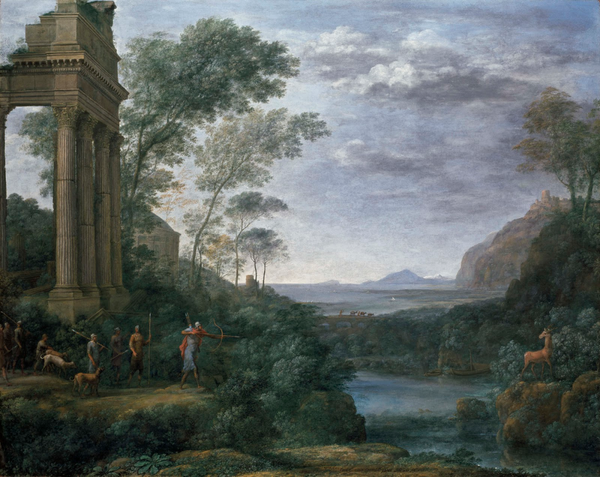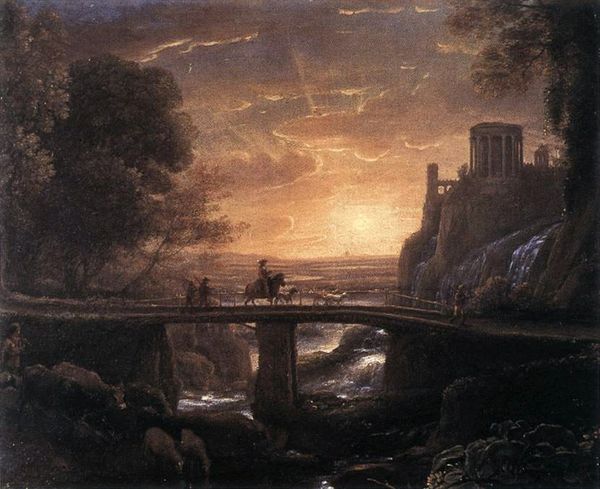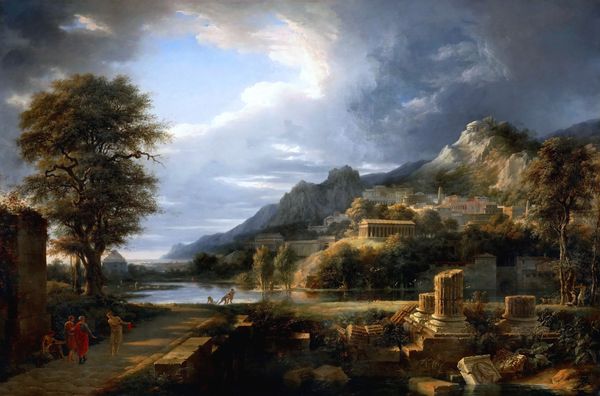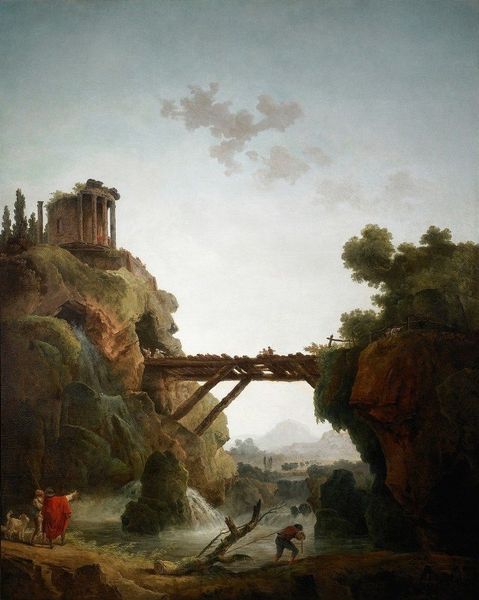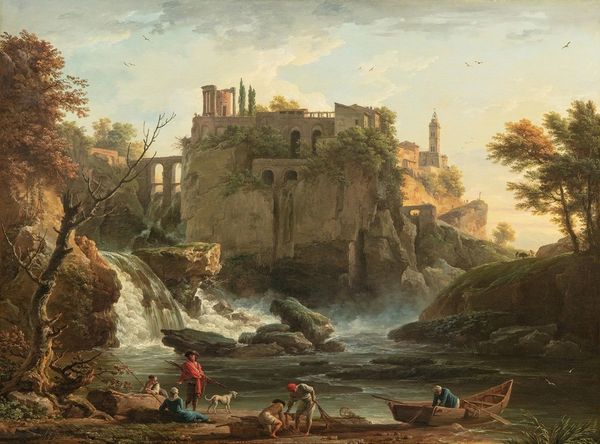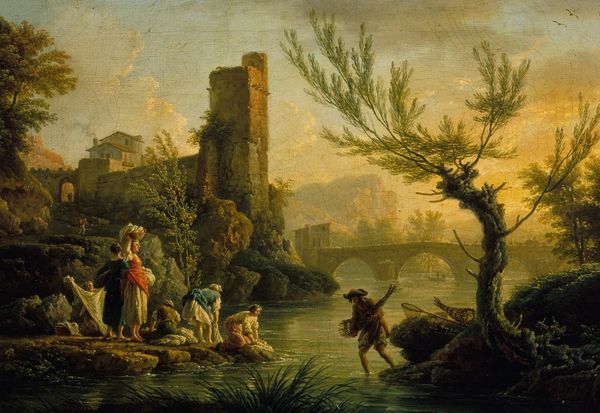
painting, oil-paint
#
painting
#
oil-paint
#
landscape
#
oil painting
#
romanticism
#
history-painting
#
academic-art
Copyright: Public Domain: Artvee
Editor: So, here we have "Evening; Landscape with an Aqueduct," an oil painting by Théodore Géricault, made around 1818. It's such a dramatic landscape, with that strong contrast between the golden sunset and the dark, stormy clouds. How do you interpret the imagery at play here? Curator: Géricault uses imagery steeped in cultural memory. Aqueducts themselves speak of Roman ingenuity and power, and the architectural ruins are potent symbols of faded empires, and mortality, a constant theme in Romanticism. Editor: Mortality? I was focused on the aqueduct. Curator: Look closer, not just at the aqueduct, but at its ruined state and the figures seemingly struggling in the water below, and the imposing, darkened architecture in the distance looming on top of the central land mass. The artist poses nature’s sublime, immense scale in conjunction with signs of civilizations risen and fallen, forcing the viewer to contend with their place within such magnitude. Don’t you think Géricault plays with that dichotomy between human ambition and nature’s ultimate power? Editor: I do now that you point it out. I didn’t really notice the tiny figures until you mentioned them. Curator: These human elements invite the viewer to find continuity between then and now. Géricault pulls on these classical elements, then complicates them by showing their ruin and presenting them in ways that evoke emotional resonance within the viewer, almost encouraging one to contemplate human insignificance in the face of larger themes of death, legacies, and ruin. Editor: That’s a much deeper read than I initially had, thinking just about the pretty sunset. I'll definitely look at landscapes differently now! Curator: Me too; revisiting artworks allows them to reshape my perceptions with new relevance and perspectives.
Comments
No comments
Be the first to comment and join the conversation on the ultimate creative platform.
